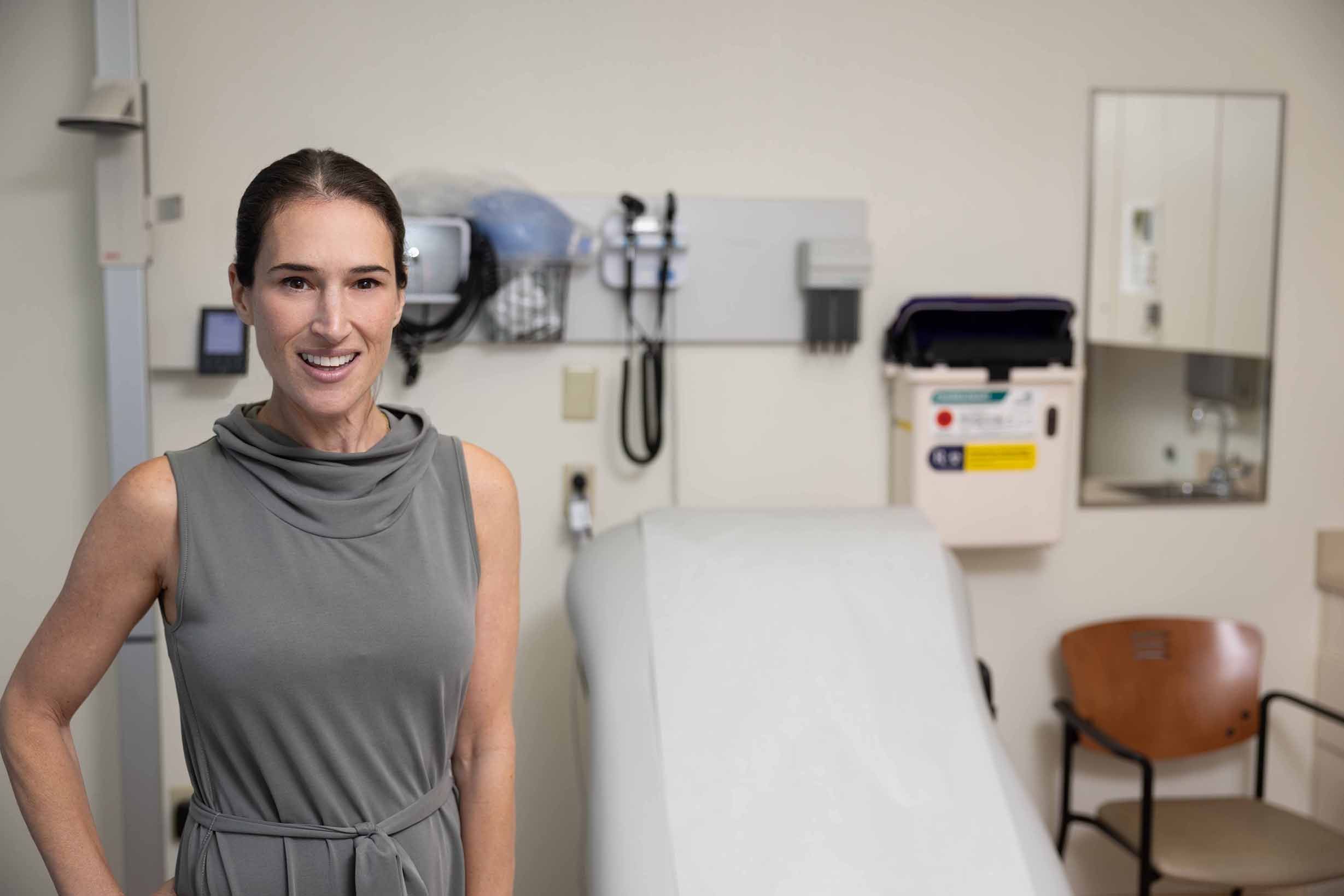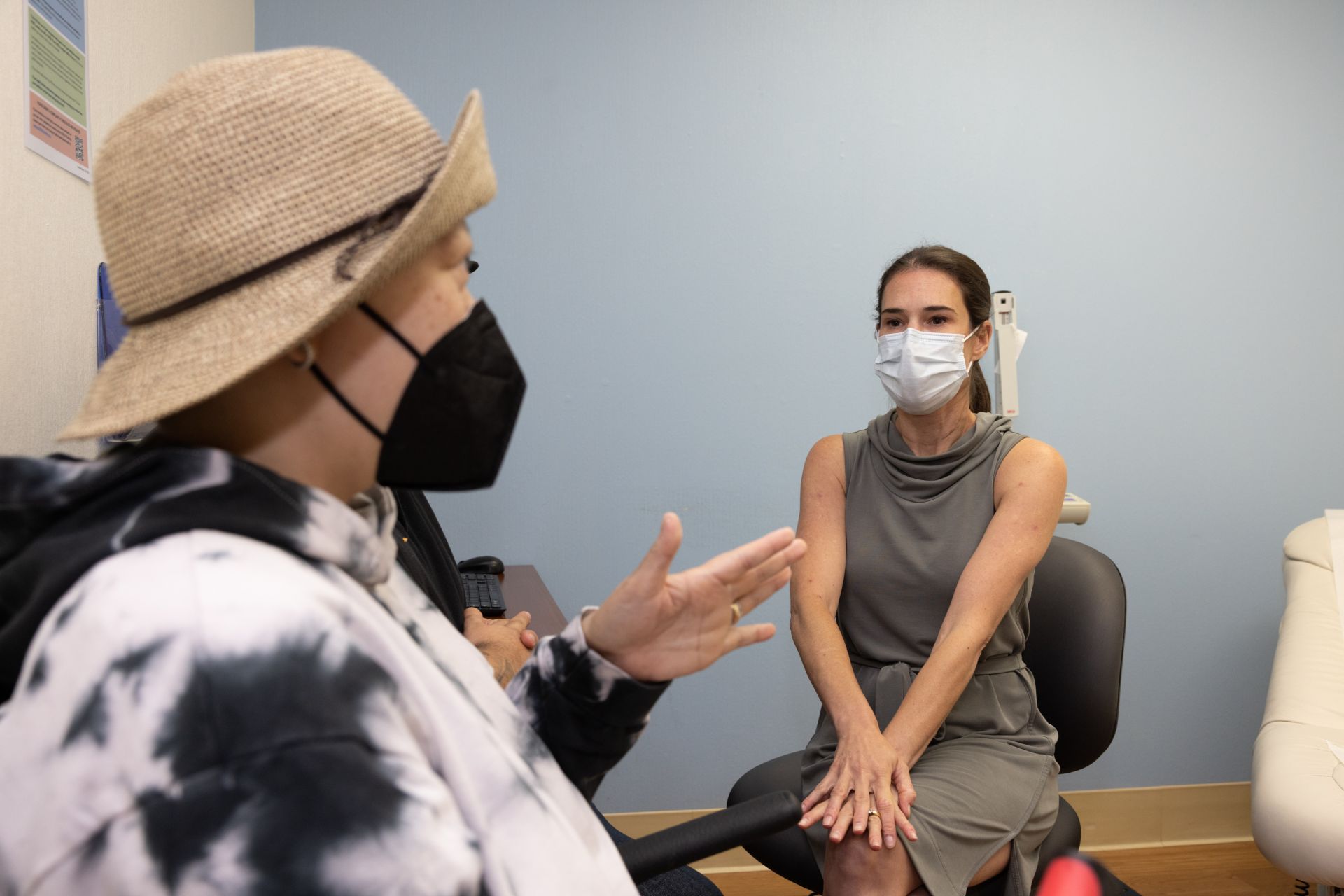One Leukemia Treatment to Rule Them ALL

One Leukemia Treatment to Rule Them ALL
For adults with acute lymphoblastic leukemia (ALL) that don’t respond to chemotherapy, the series of treatments that comes next can seem like the spin of a roulette wheel. Some patients receive a bone marrow transplant, which requires a lengthy testing process to ensure a good donor match, and months of recovery if everything goes well. Other patients instead begin with an immunotherapy, which can come with severe side effects and only helps quell disease in a fraction of people. If the first approach doesn’t work, their clinician may turn to the other. For a number of patients, their disease recurs even after both.
Now researchers and clinicians in the blood and marrow transplantation & cellular therapy division have developed a new option for ALL patients. Instead of trying a transplant followed by an immunotherapy—or vice versa—they have combined both therapies into one and added some new twists that could help improve the treatments’ success rates. The result: a single ALL treatment that integrates new avenues of research into the best way to fight the cancer.
“This new protocol really changes the paradigm. It combines multiple avenues of research that have been going on at Stanford for years,” says Lori Muffly, MD, associate professor of blood & marrow transplantation and cellular therapy. “We hope it’s a first step toward something really successful and exciting for our patients.”
This fall, Muffly and her colleagues enrolled the first ALL patients in a clinical trial to test the new combination approach, in which patients receive a customized cocktail of immune cells from a donor. The trial, she says, will advance the science of lymphoma and leukemia treatment, as well as give new hope to patients who have relapsed after chemotherapy.
“This trial is really showcasing Stanford’s strengths in both bone marrow transplantation and cell therapy,” says Muffly’s collaborator Melody Smith, MD, MS, an assistant professor of blood & marrow transplantation and cellular therapy.
Based on Basic Research
The human immune system has the ability to recognize cells and molecules that don’t belong — including tumor cells. In recent years, scientists have discovered how to take advantage of this natural power of the immune system to help fight cancer. One of the new mainstays of cancer immunotherapy is CAR T-cell therapy, in which clinicians remove a patient’s T cells, reengineer them with cutting-edge gene engineering technologies to better recognize cancer, and infuse them back into the patient.
Smith, who recently moved her lab to Stanford from Memorial Sloan Kettering Cancer Center to start her independent research lab, has spent the last eight years using mouse models of cancer to study how to optimize the use of cell therapies like CAR T-cell therapy following bone marrow transplants. Much of her research has revolved around the idea of creating CAR T cells from donor immune cells instead of immune cells harvested from patients themselves. The quality of these cells, she hypothesized, might be better. Plus, the CAR T cells could be given at the same time as a bone marrow transplant — all from the same donor. “I had really strong data in animal models that this combination approach could be successful in lymphomas and leukemias,” says Smith.
Smith’s move to Stanford to start her independent research lab opened up even more opportunities to fine-tune her approach, by combining it with specialized CAR T cells and a new transplant protocol that Stanford clinicians had already been working on.

Melody Smith, MD, MS
This trial is really showcasing Stanford’s strengths in both bone marrow transplantation and cell therapy.
– Melody Smith, MD, MS
This trial is really showcasing Stanford’s strengths in both bone marrow transplantation and cell therapy.
– Melody Smith, MD, MS

Lori Muffly, MD

